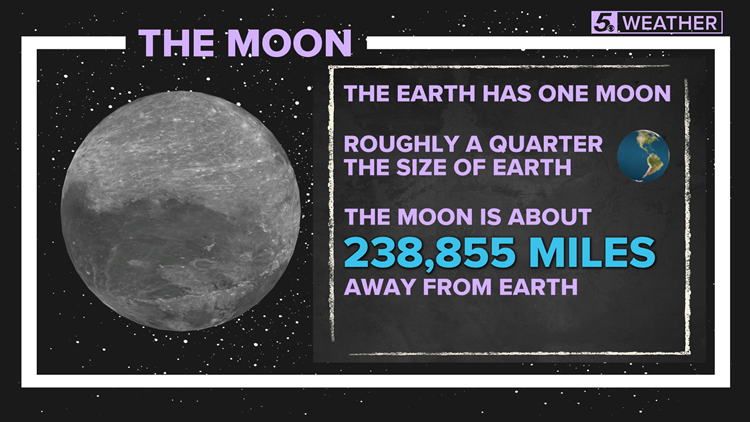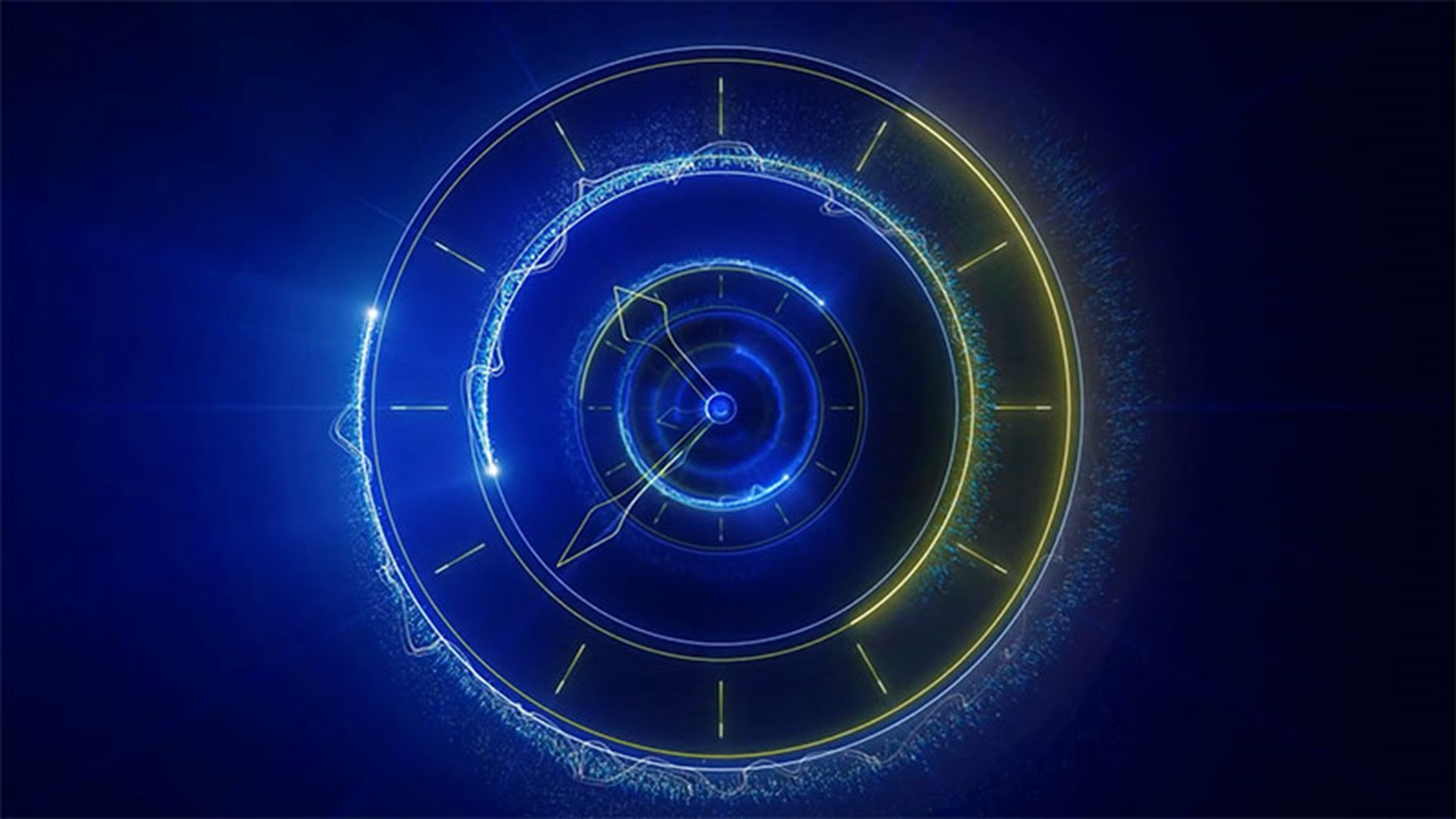SAN ANTONIO — Our Moon is roughly a quarter the size of Earth with a radius of 1,079.6 miles. It is the brightest object in our night sky and it is about 238,855 miles away from Earth. That means 30 Earth-sized planets could fit in between Earth and the Moon, according to NASA.

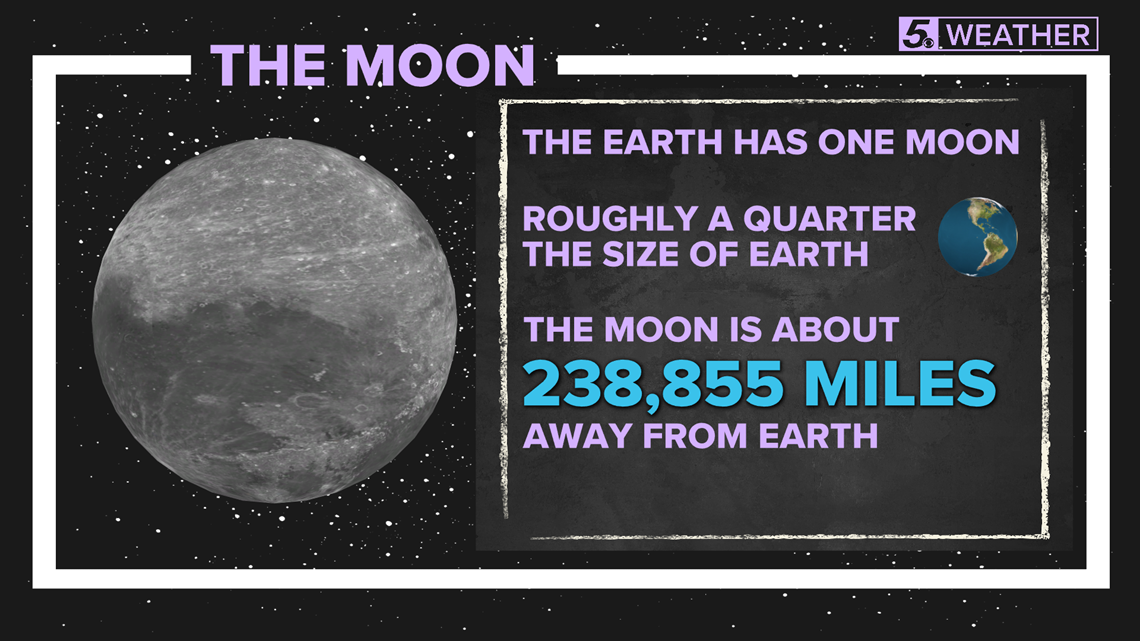
Our moon can appear very bright in our sky thanks to the sun. When our moon appears very bright, sunlight is being reflected off of the moon's surface.


On Earth, we always see the same side of our moon. The moon rotates on its axis at the same rate it orbits around Earth. It takes 27 Earth days for the moon to make one complete orbit around our planet. During those 27 days, our moon will go through different phases.

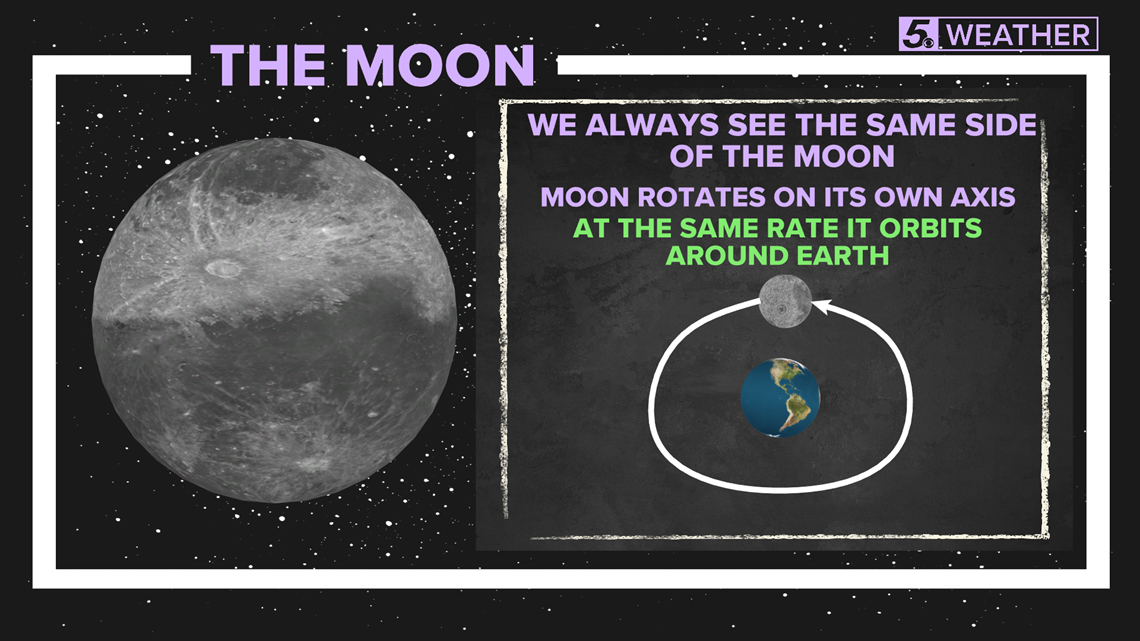
RELATED:
The moon phases we see from Earth are due to the angle of the moon with the sun. A new moon occurs when the Moon is lined up between the Earth and the sun. We see the side of the moon that is not lit by the sun and the far side has full sunlight.

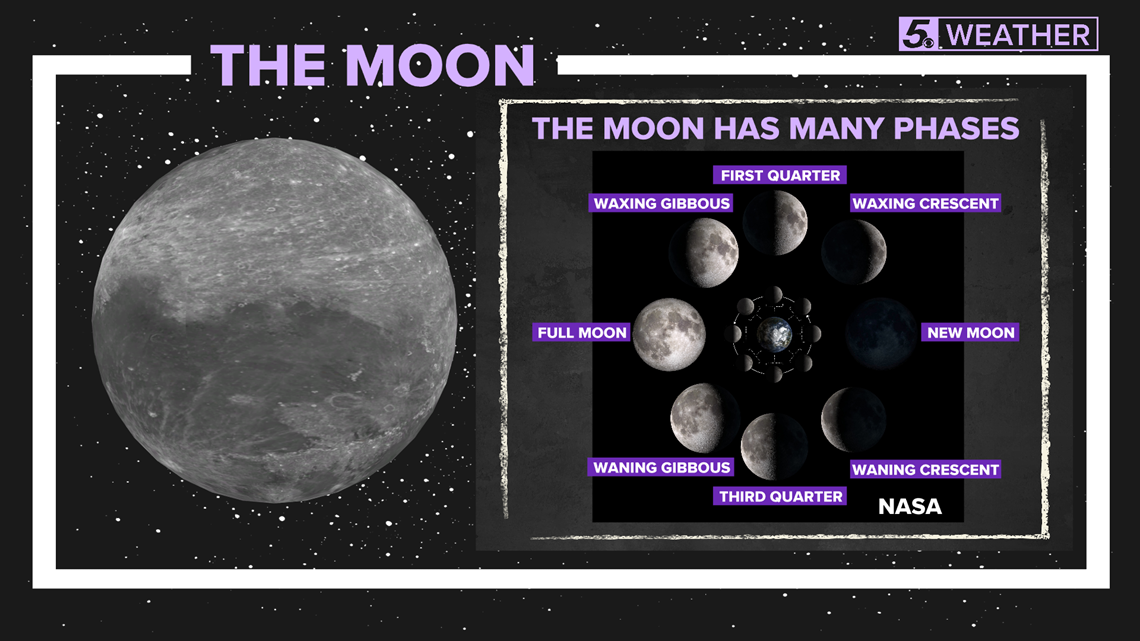
What and when was the first manned mission to land on the moon? The first manned mission to land on the moon was Apollo 11. On July 20, 1969, NASA astronauts Neil Armstrong and "Buzz" Aldrin were the first humans to set foot on the moon.

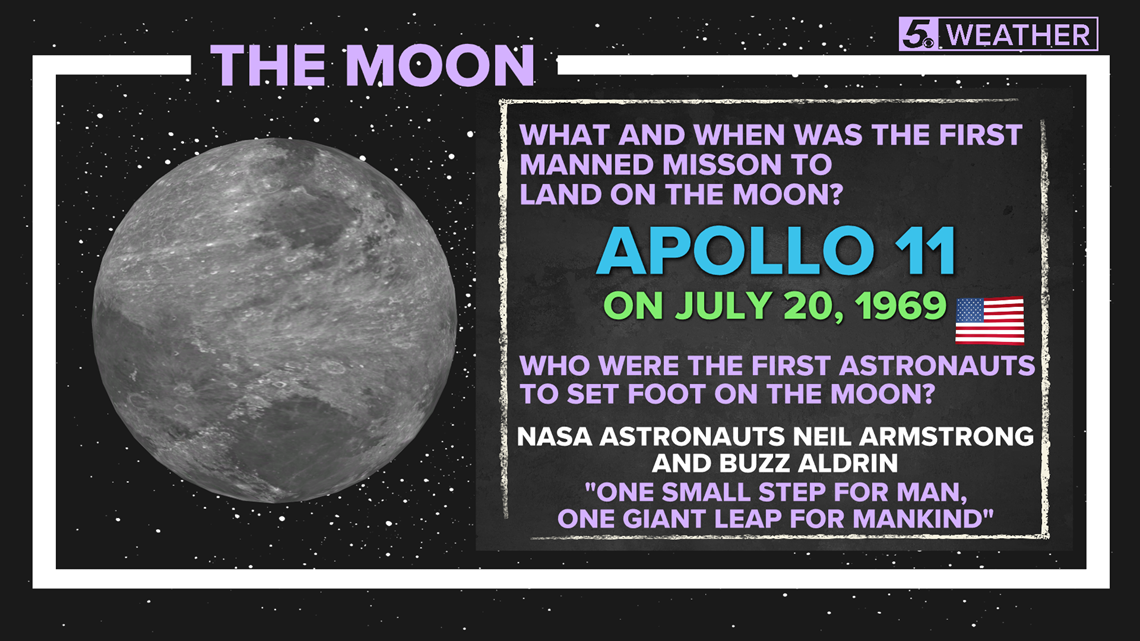
We use telescopes and spacecraft to study the moon today. Scientists know the moon is covered by craters. The Moon's structure is made up of a core, mantle and crust. There used to be active volcanoes on the moon, but they have not erupted for millions of years.
Did you know our moon is the 5th largest moon out of more than 190 moons in our solar system? According to NASA, the largest moon is Ganymede and is the only moon with its own magnetic field. Ganymede is Jupiter's moon.

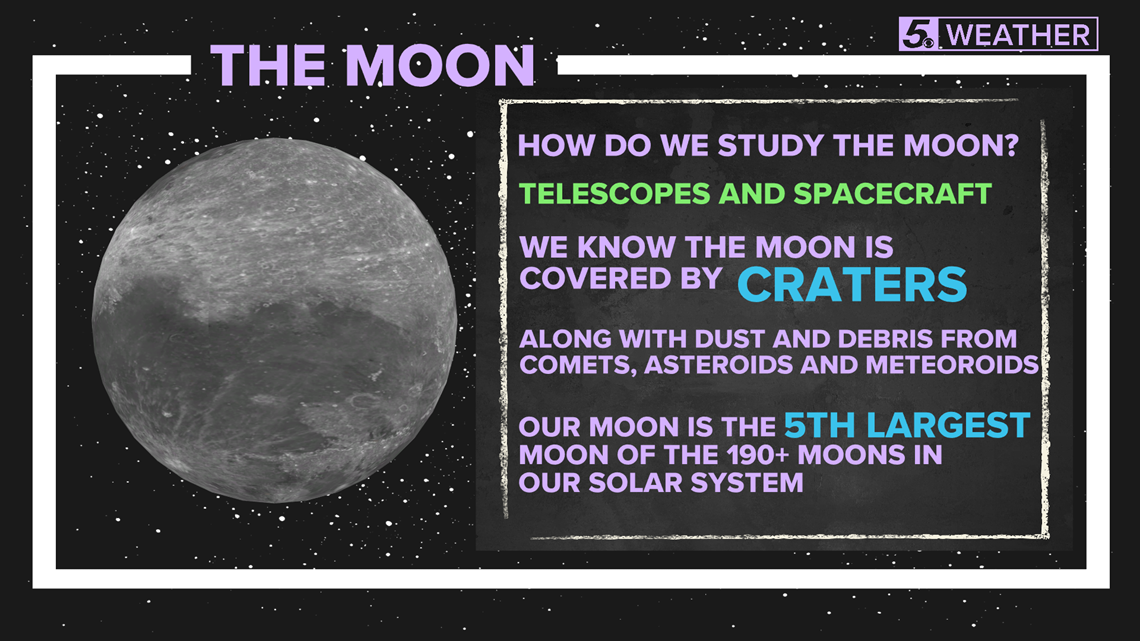
Today, NASA has three spacecraft exploring our moon. One is the Lunar Reconnaissance Orbiter that is currently orbiting the moon. Over the years, 24 humans have traveled to the moon, but only half have walked on the moon's surface.

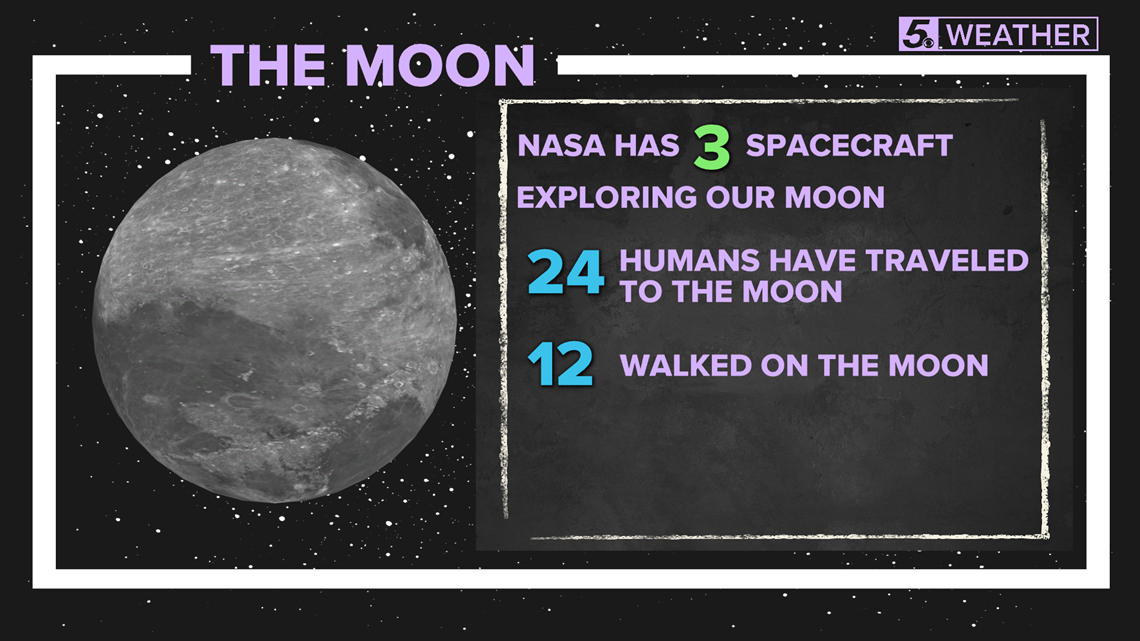
Here is the Cloudy with a Chance of Learning schedule:

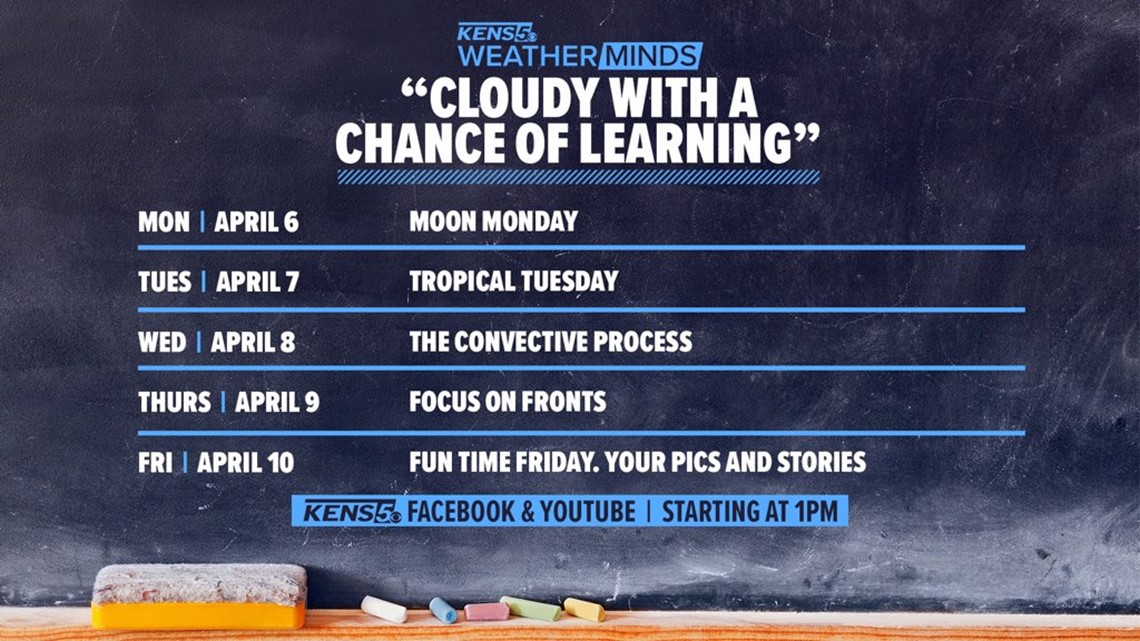
Don't forget you can download the KENS 5 app for the latest news and weather information each day while you are on the go.
PEOPLE ARE ALSO READING:

